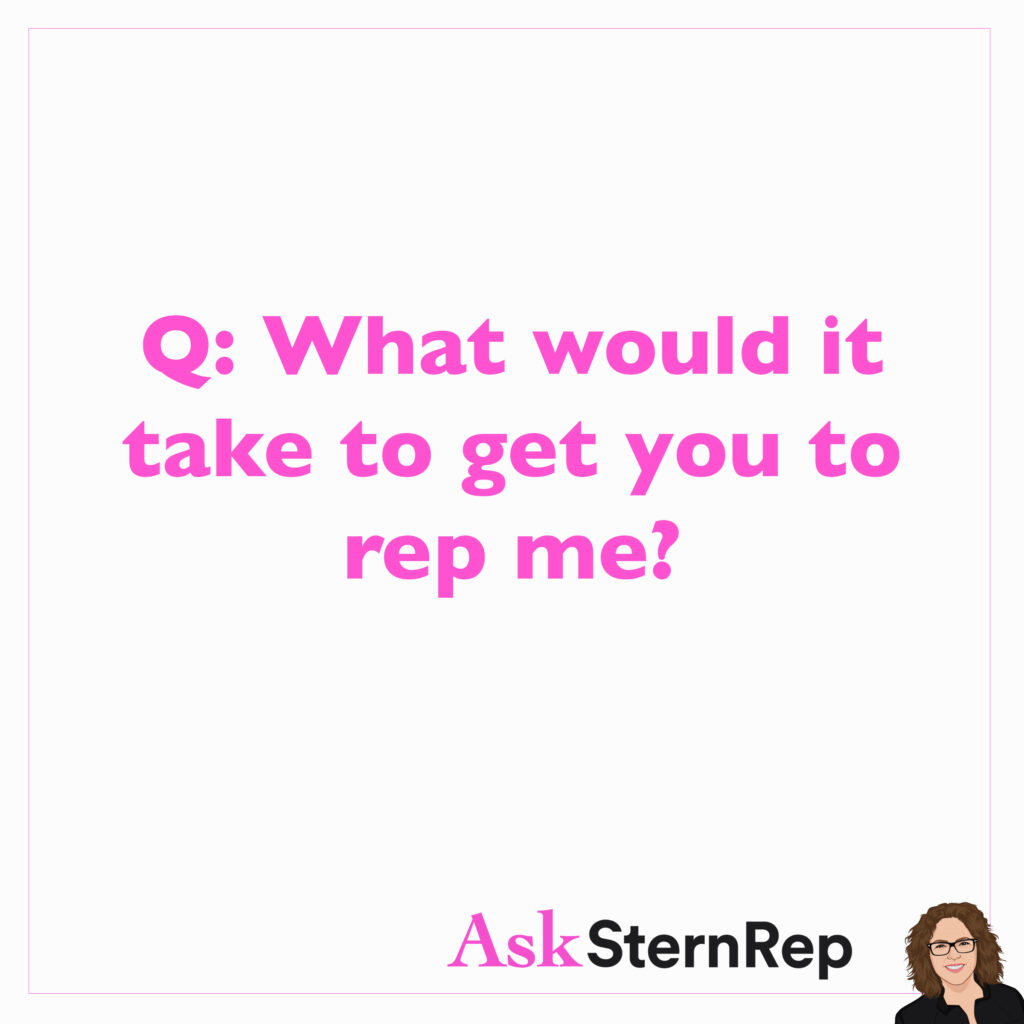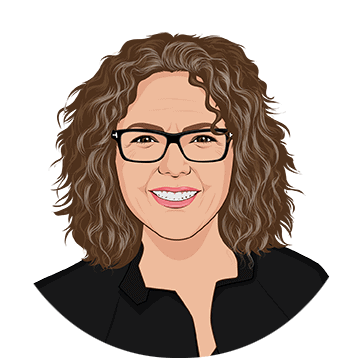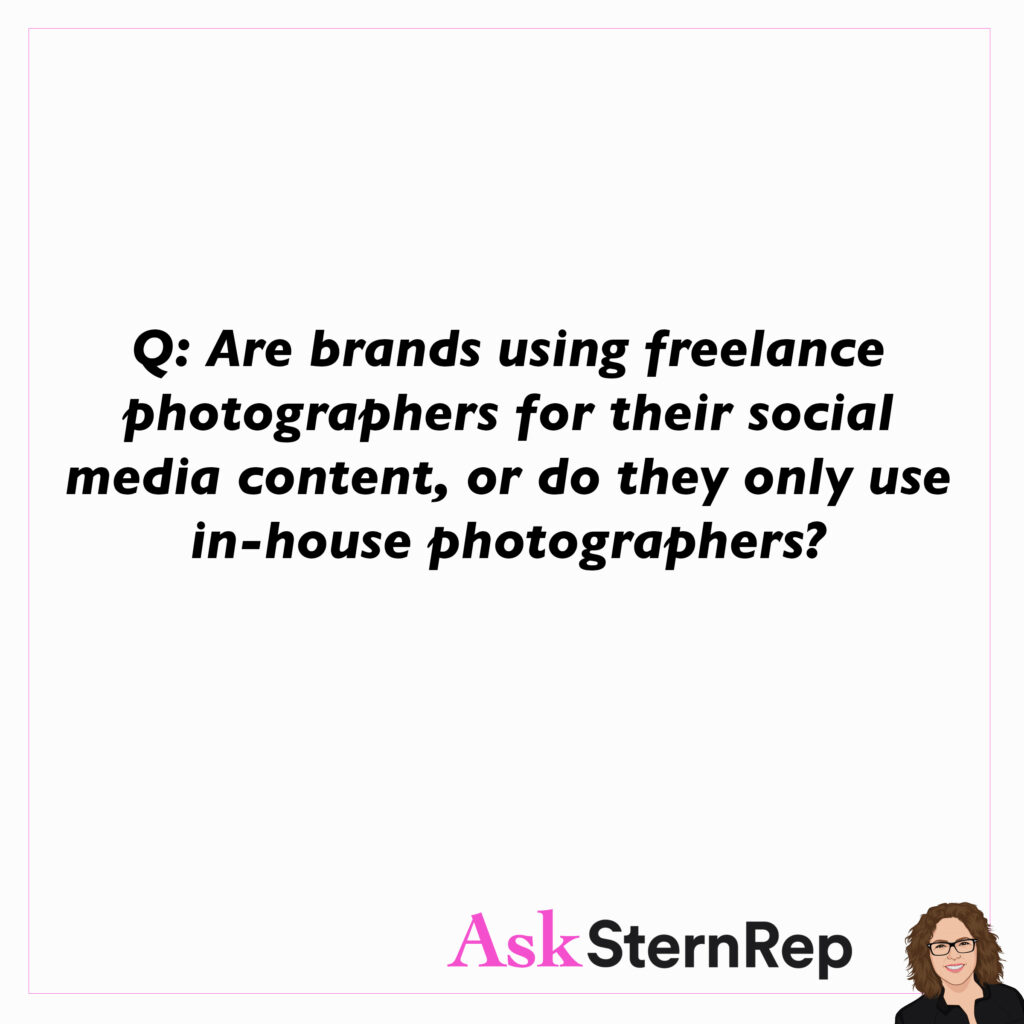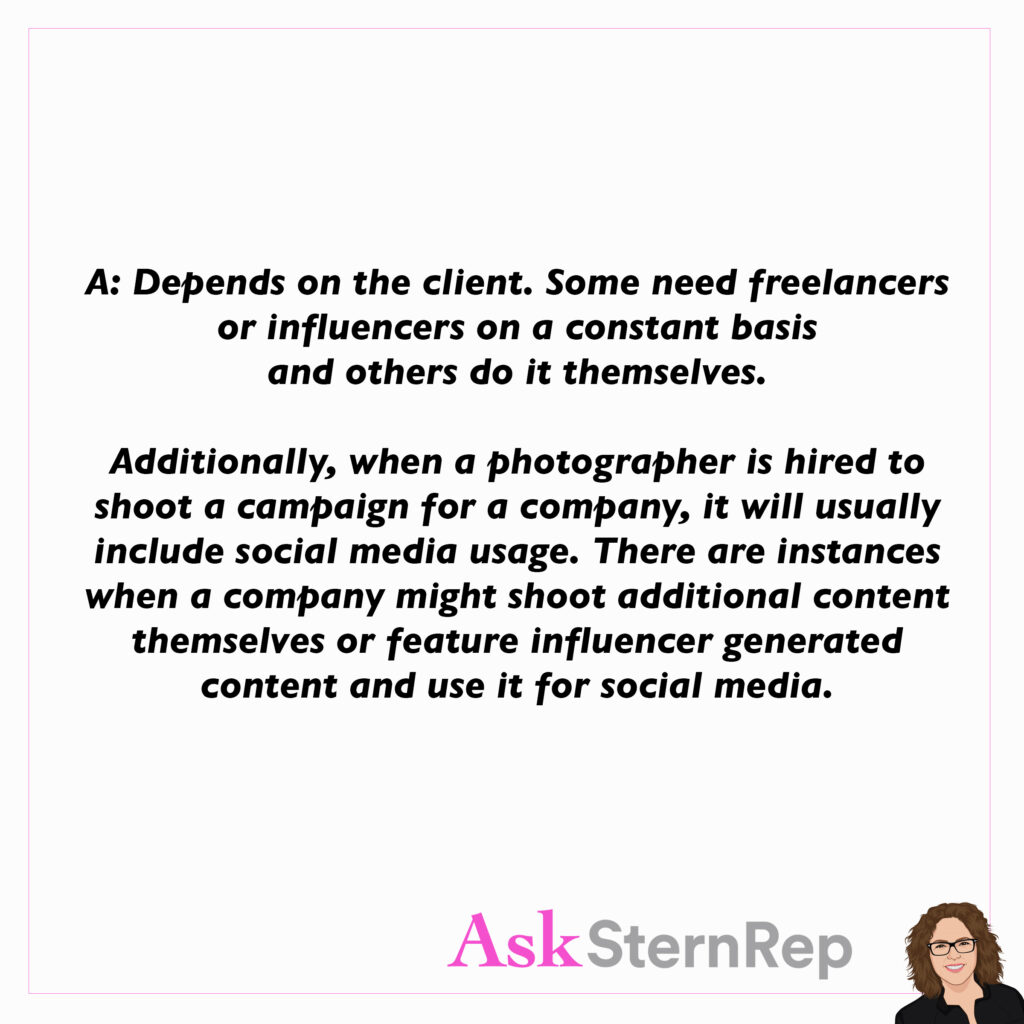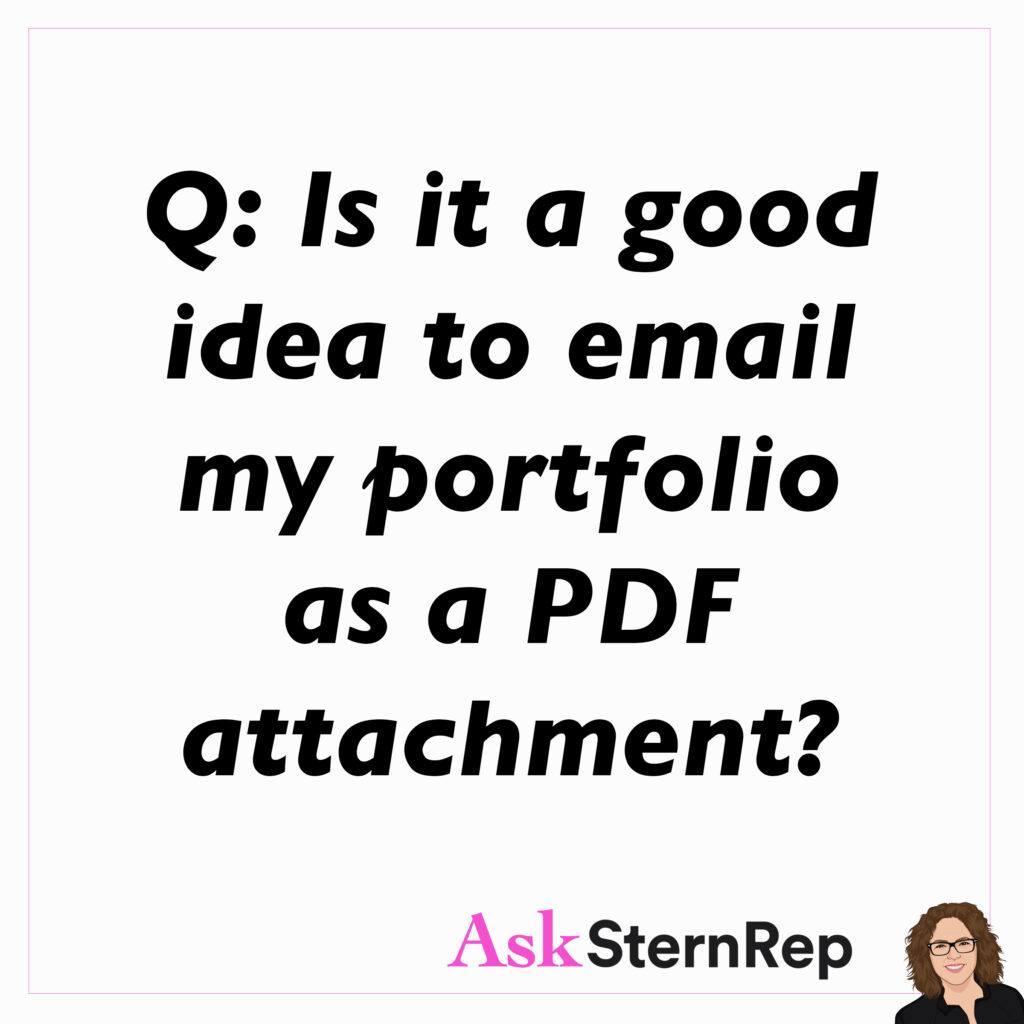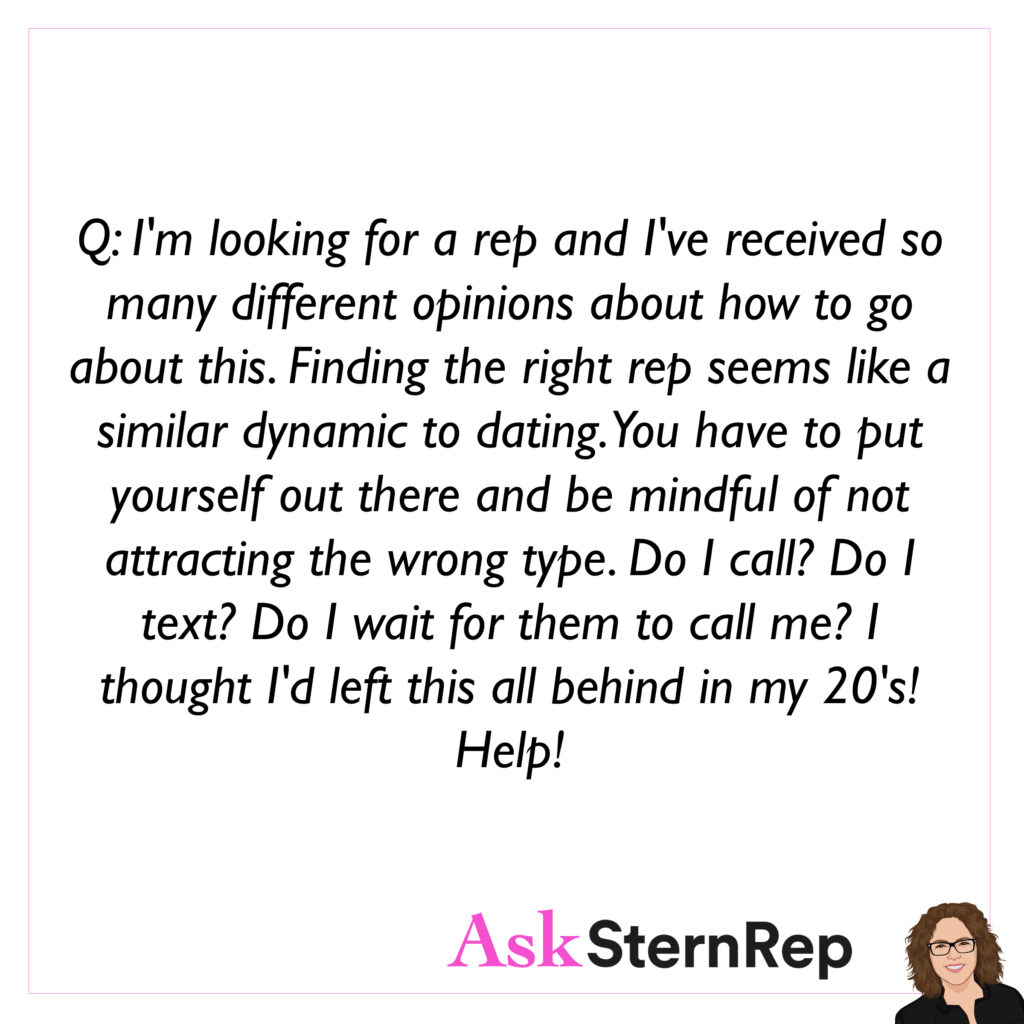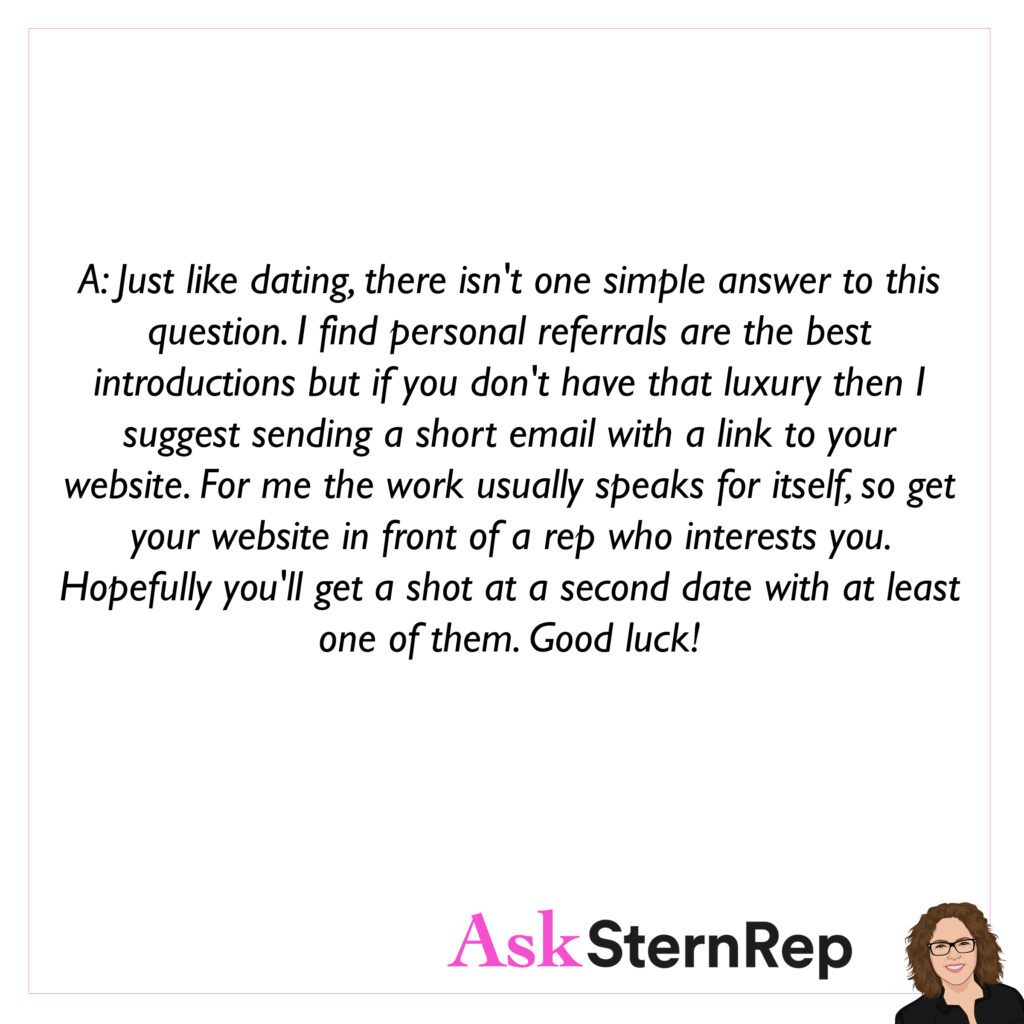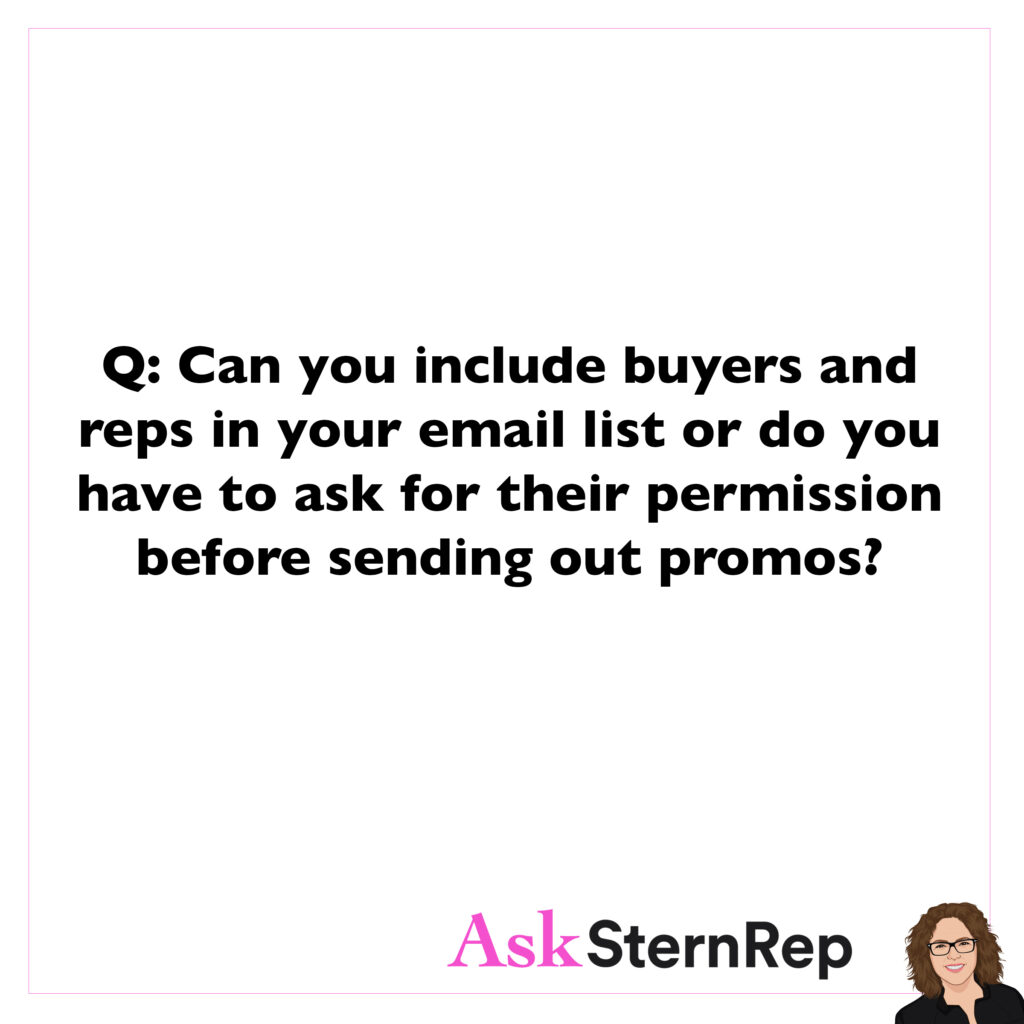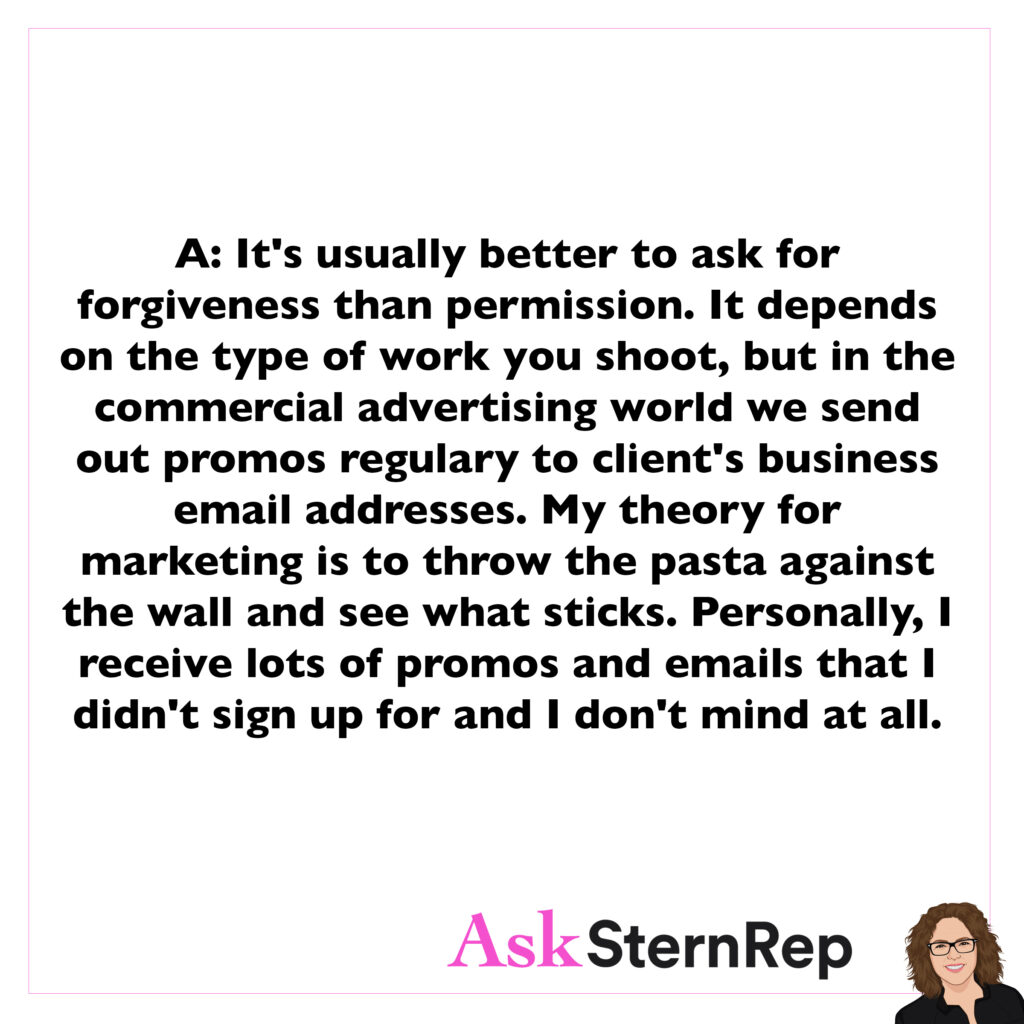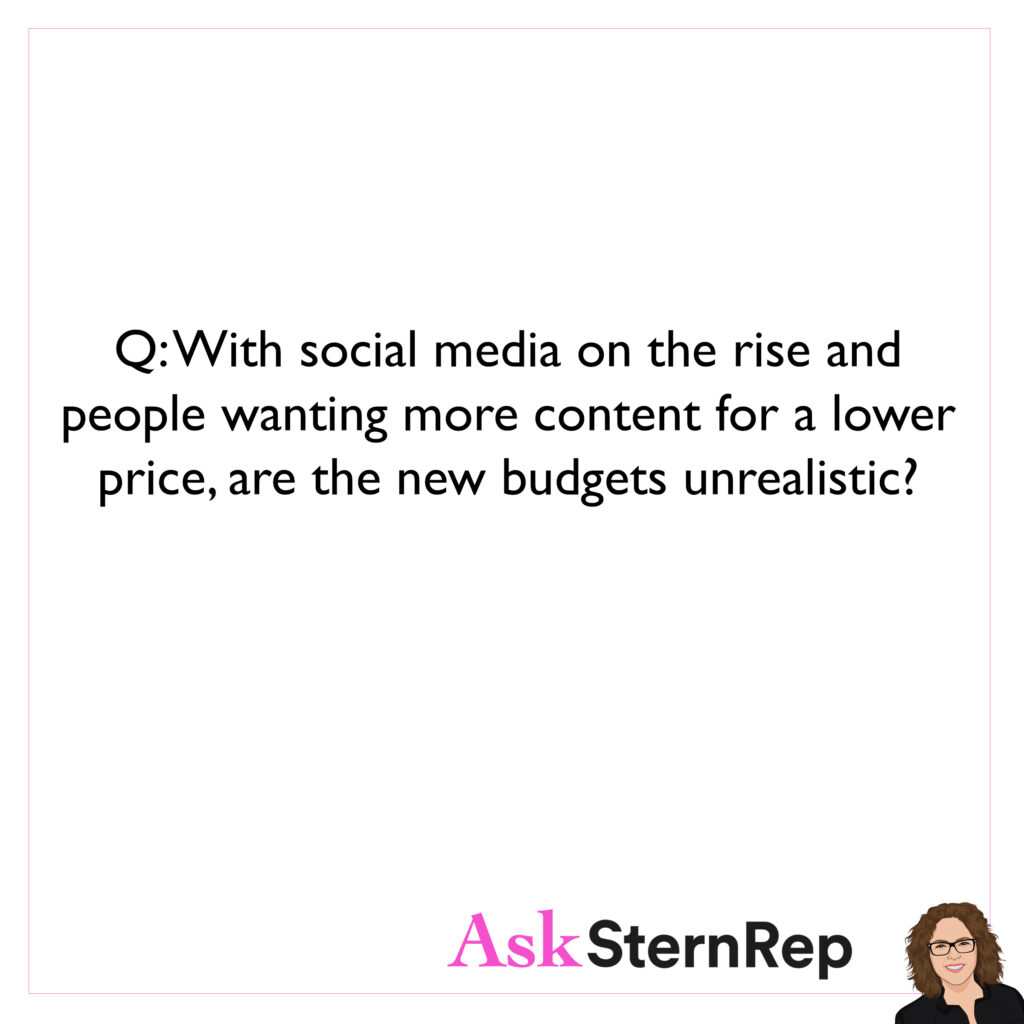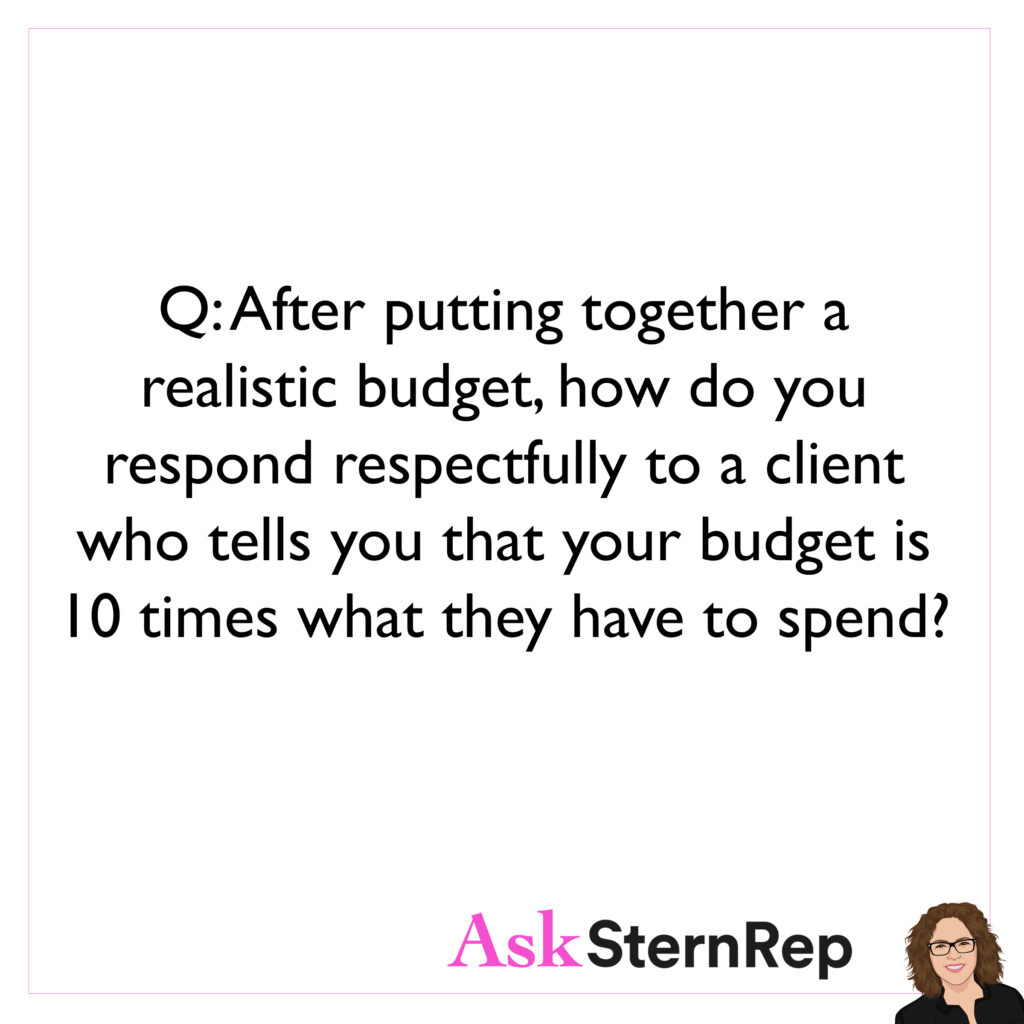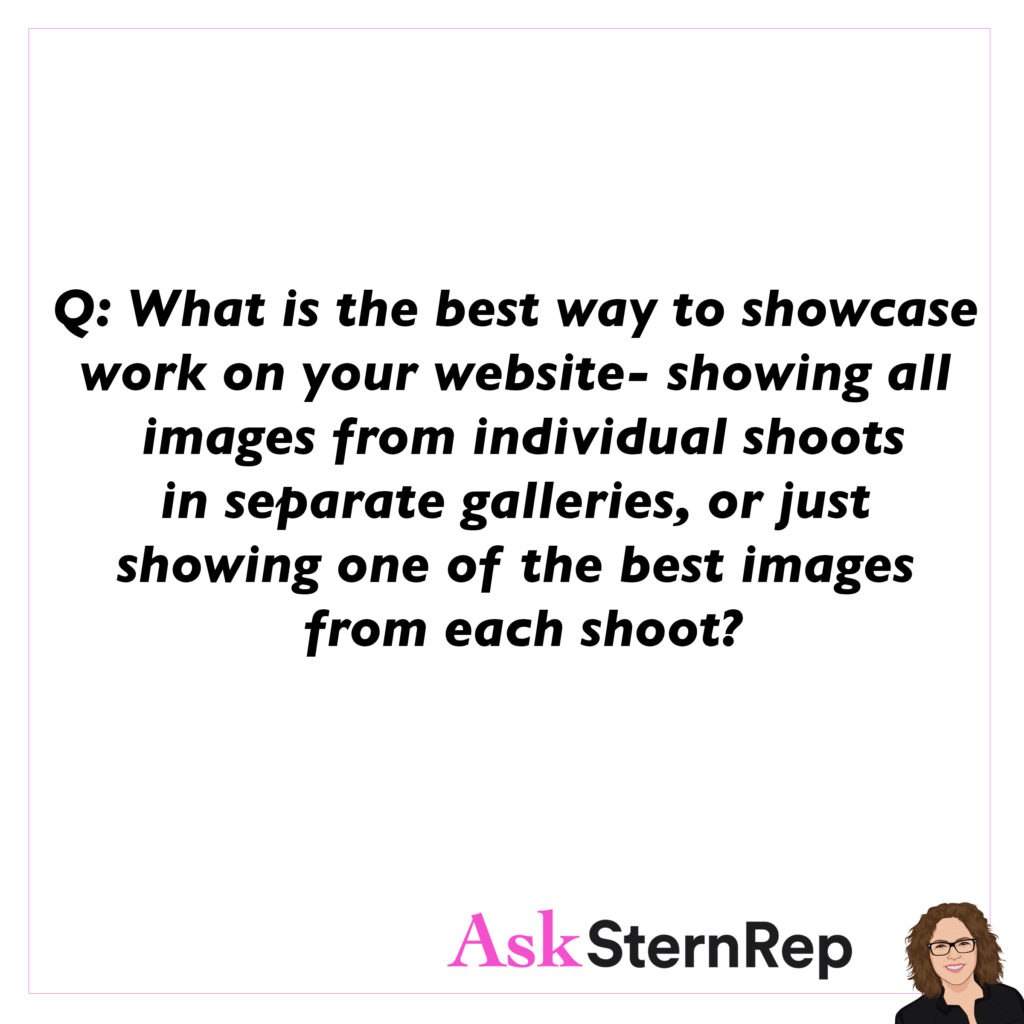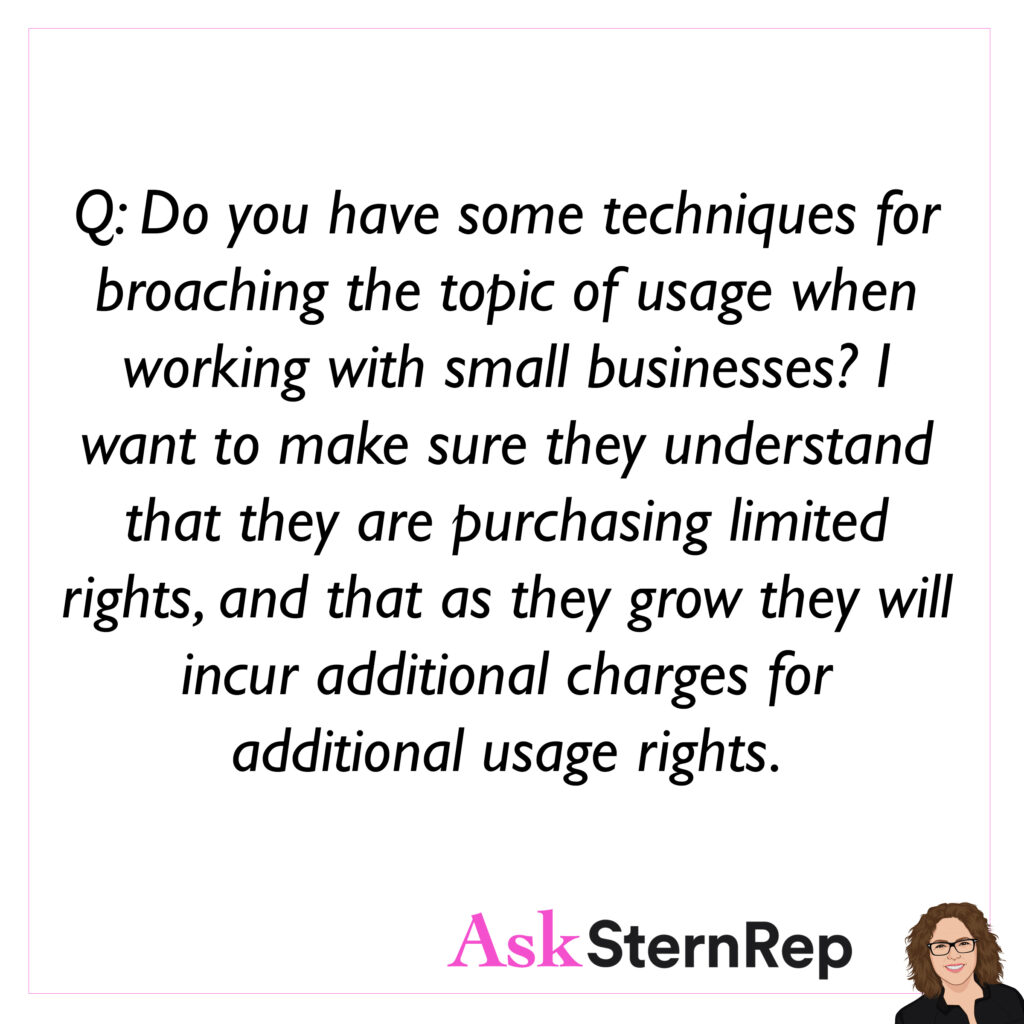

Q:
Do you have some techniques for broaching the topic of usage when working with small businesses? I want to make sure they understand that they are purchasing limited rights, and that as they grow they will incur additional usage rights.
A:
Usage is often confusing, and some clients, outside the oversight of an agency, have little understanding of the concept. A few simple sentences will help clarify the usage they are paying for. One very important piece of advice is to put everything in writing from the beginning. Start with the estimate and make sure it’s clear in the contract once you’ve booked the job. Once it’s in writing, you’re protected. If you want me to review the contract, I’m happy to take a look.
